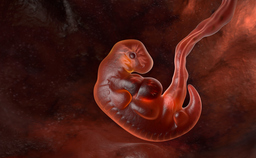Development of Human Neural Tube Tissue from Stem Cells
TECHNOLOGY NUMBER: 2021-094

OVERVIEW
Novel method for generating neural tube-like structures that mimic in vivo conditions- Orthogonal gradients create anterior-posterior and dorsal-ventral neural tube patterning
- Creates a model to study neural tube development and disorders
BACKGROUND
The neural tube is the embryonic progenitor of the central nervous system, with the posterior region giving rise to the spinal cord and the anterior region developing into the forebrain, midbrain, and hindbrain. An important process which takes place during the development of the neural tube is the cell fate specification and patterning along the anterior-posterior and dorsal-ventral axes, which leads to the differentiation of classes of neuronal progenitor cells located at defined positions within the neural tube. As embryologic development progresses, these neuronal progenitor cells ultimately give rise to distinct classes of mature functional neurons. While some of the molecular mechanisms of neuronal cell specification are known, many of the details of these processes remain unclear. Existing in vitro methods that study neural tissue development fail to produce a neural tube-like tissue architecture, so a need exists to design an advanced technological platform that examines anterior-posterior and dorsal-ventral patterning.
INNOVATION
Researchers at the University of Michigan have successfully invented a microfluidic human neural tube model using human pluripotent stem cells (hPSCs). The hPSCs form as a rectangular-shaped adhesive island that self-organizes and develops into a tubular structure containing a single central lumen upon a microfluidic platform. This platform allows for the supplementation of exogenous, orthogonal morphogen gradients that are important for anterior-posterior as well as dorsal-ventral patterning of the neuroepithelial tube, mimicking neural tube development in vivo. Genes critical for neural tube growth, known as HOX genes, that are expressed during embryogenesis to create the appropriate spatial arrangement of the neural tube are expressed in an analogous fashion in this model. Additionally, the hPSCs spontaneously differentiate into neuroepithelial cells within this neurogenic culture condition. This synthetic model therefore mimics the morphology, cell differentiation and cell fate patterning of human neural tube formation to provide an experimental tool for studying its development as well as the effects of toxins and therapeutic agents on its growth.